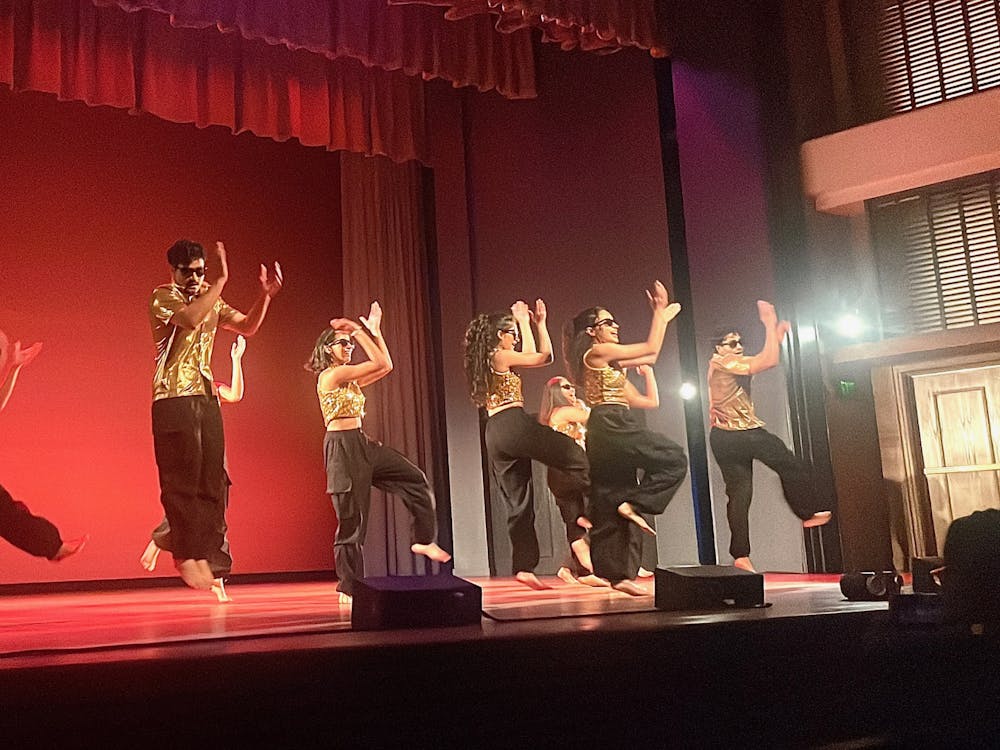Though its influence may seem subtle, theoretical mathematics underlies the science and technology that we use in our everyday lives, serving as a framework for many scientific discoveries.
University of Richmond mathematics professor Heather Russell, along with undergraduate students, have pioneered the use of symmetry and color to understand changes in different math sequences through a fusion of mathematics and computer science. This research will help make scheduling and job allocation problems easier to solve for future mathematicians.
In the article, Russell explained how reconfiguration systems, which help to find the connections between solutions, have three parts: a problem, a set of solutions and a connection between the solutions. However, sometimes there are no connections between math systems. Reconfiguration is an important part of both math and computer science, as both disciplines work together to find solutions.
Math gives us the tools to study these systems, and computer science can write code to generate images of reconfiguration systems that could not be done by hand. The main purpose of reconfiguration is taking the solutions for one particular problem for a graph and finding the link between them.
Russell loves solving puzzles and asking questions that have never been answered before. Her love for visual representation of mathematics led her to begin this research project alongside her colleague, computer science professor Prateek Bhakta, with the help of four undergraduate students. During this project, they looked into whether solutions of reconfiguration systems were connected using graph coloring reconfiguration.
“We looked at a refinement of the connectedness question for graph coloring reconfiguration,” Russell said. “Graph coloring is a kind of game you can play on mathematical graphs where you color the vertices subject to certain rules.”
In short, the group examined coloring models scheduling and job allocation problems. Russell said an example of a scheduling problem would be making a class schedule if there were many people taking classes at different times.
The research was published in August. While the paper was published after the students on the project had graduated, the knowledge that they gained from it stuck with them nonetheless, they said.
Rachel Morris and Maxine Xin, two 2020 graduates, participated in the research alongside Russell and Bhakta.
Morris is currently pursuing her doctorate at North Carolina State University. She worked on the theoretical side of the project alongside Russell as part of her senior year thesis project. This was her second research project with Russell. She is very grateful for the connection she made with her professor, and the work helped to inspire her to continue on to graduate school, she said.
Xin is a graduate student at The University of Texas at Austin. She worked on the computer science side of the research, but also helped with some of the mathematical pieces, like writing proofs. As a student in Bhakta’s class, Xin approached him about research opportunities, which eventually led to her involvement in this research, she said.
A special element about this research project was the interdisciplinary collaboration between the math department and the computer science department, Xin said.
Enjoy what you're reading?
Signup for our newsletter
Morris enjoyed working with other students and faculty outside of the math department, as she felt it allowed her to hear lots of different perspectives, she said.
Xin appreciated how the research was a joint project, as she is interested in both computer science and mathematics, she said. She felt that it reaffirmed her interest in the theoretical side of computer science and built her confidence to take on other complex research projects.
The project not only allowed Russell and her student research team to advance the study of reconfiguration systems, but also helped Xin and Morris gain confidence in their own skills as academics. Xin strongly recommends that undergraduate students pursue research opportunities during their time at UR. After all, you never know what you might “figure” out, she said.
Contact features writer Veronica Melendi at veronica.melendi@richmond.edu.
Support independent student media
You can make a tax-deductible donation by clicking the button below, which takes you to our secure PayPal account. The page is set up to receive contributions in whatever amount you designate. We look forward to using the money we raise to further our mission of providing honest and accurate information to students, faculty, staff, alumni and others in the general public.
Donate Now



